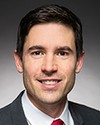We have an extensive oversight program. We have an inspection strategy for each mine site. That's implemented over the course of the year. We bring in various experts to support those inspections and to understand what's happening out there, but first and foremost, it's the operator's responsibility to be running those types of inspections and sweeps and doing so on a very diligent and aggressive basis. Part of our review is to see that they are performing the way we expect in these spaces.
In both of those instances, we will be investigating what happened to understand what occurred and why, and if there are to be any consequences for those operators in that case.
In the bird incident as an example, notwithstanding what our formal policies and procedures might state today, we understand the public interest in what's happening, so we communicated on Saturday morning what was happening with the bird and wildlife incident at Suncor's facility.
On the release into the Athabasca, we were on site swiftly to check exactly what was happening. It is an approved settling pond, so that water can be released, but it exceeded the limits for TSS, total suspended solids, that should be in there, so we're investigating that incident as well.




